My perfect cousin,what I like to do, he doesn’t. It perfectly describes the relationship between the Peugeot 408 and Citroen’s C5X. If you take a good look, they may have the same strains of DNA, but it’s what they do with them that differentiates. Outside of the family, competition also comes in the form of the heavy weight Cupra Formentor and Renault’s featherweight Arkana; both quite stylish but in slightly different leagues. We’d be reaching if we said it looked like an Urus… but, from certain angles.
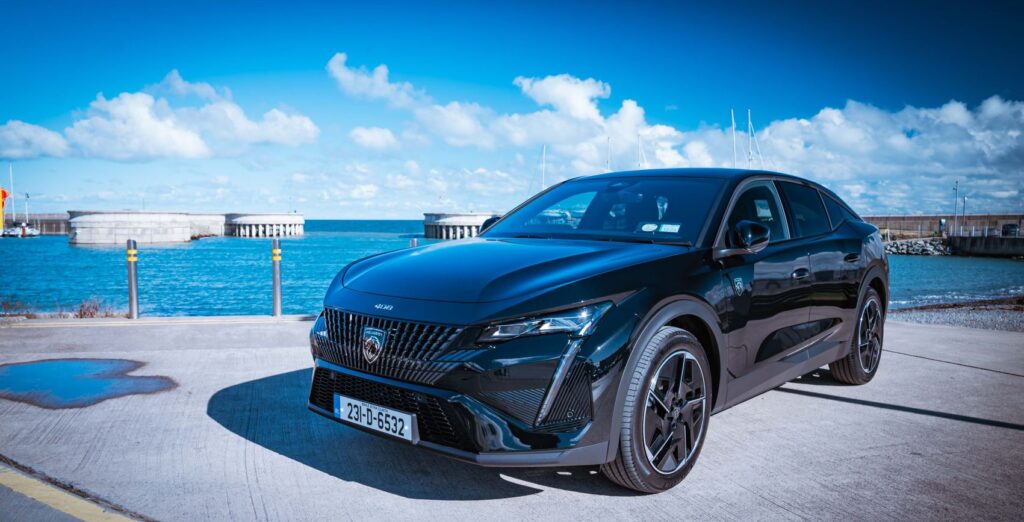
Special mention : It’s a big car and the 1.2 litre 3 cyl copes well as long as it’s reasonably loaded. Handles well and is very similar to the rest of the Peugeot range to drive. Looks great & has plenty of rear space.
Needs work : They don’t offer a pano roof or heated seats on the options list. Lane Assist & Start/Stop still have to be adjusted at the start of every journey. Keyless entry activates in close proximity, so if you’re walking around or nearby, it easily triggers.
| BHP 130 HP | Petrol / Auto |
| 0-100 km/h in 7.3 seconds | Road Tax €210 |
| Price: GT from €44,995 As Spec’d : €45,775 | Boot space 536 litres |
Peugeot has continued to gun for a more premium feel in recent years and this is most evident as you step inside the newest Peugeot hot off the line. If you’ve ever been in a Stellantis made product, you will recognise their stamp across the Peugeot 408. The dashboard design is similar to the 308’s. Peugeot’s latest infotainment is a great improvement. The 408 has an upmarket and plush feeling interior and it feels solidly put together. High quality materials are used throughout the cabin and the touch points are pleasant to touch. Peugeot continues to use the high-set digital instrument panel that you view above the smaller but easy to use steering wheel which can cut off some of the display depending on your seating position. The driver sits high up in the 408, giving it that SUV driving style and importantly for your comfort, lumbar adjustment comes as standard.
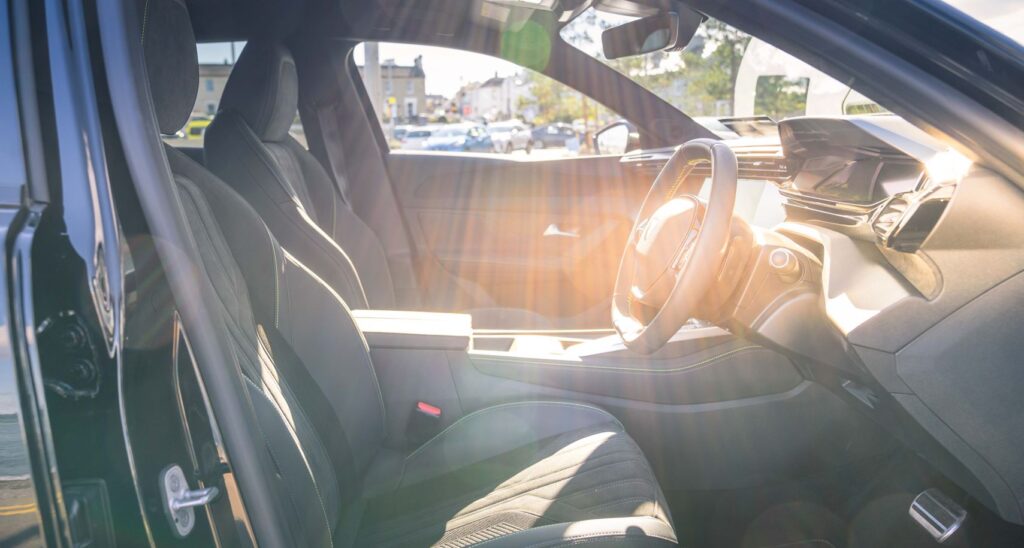
There are three trim levels to choose from, starting with the Allure. If you stretch to the Allure Pack you get a few extra luxuries such as adaptive cruise control, front parking sensors and blind-spot monitoring. There’s plenty of space for front seat passengers and the cubbies are dotted about in all the right places including large water bottle holding door bins. Rear seat passengers have a little more space than the 308. The rear seats are easy to fold down using levers in the boot as well as on the shoulders of the seats. The seats split fold 60/40 but don’t recline or slide.
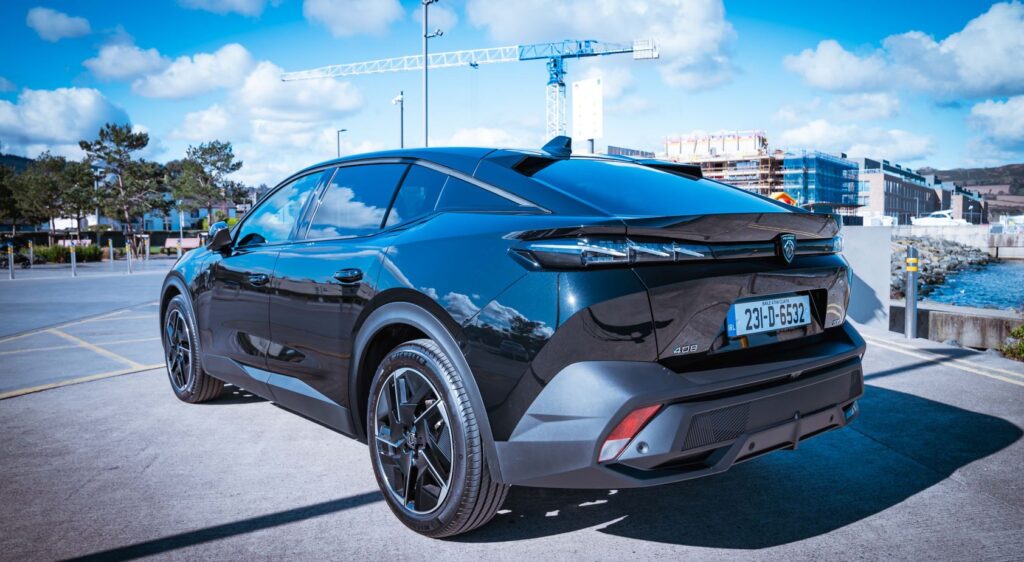
The infotainment comes in the form of the latest iCockpit. There’s a 12.4-inch panel with two screens mounted on top of each other to give a slightly 3D effect. It sits nicely on the dash and offers lots of information which is well presented. Underneath is a panel of customisable tiles which act as shortcuts such as for climate controls which mostly are accessed via the touchscreen and not standalone knobs or dials. The system could be a bit more user friendly, with multiple menu layouts, but you do get Android Auto and Apple CarPlay so you can bypass the built-in software.
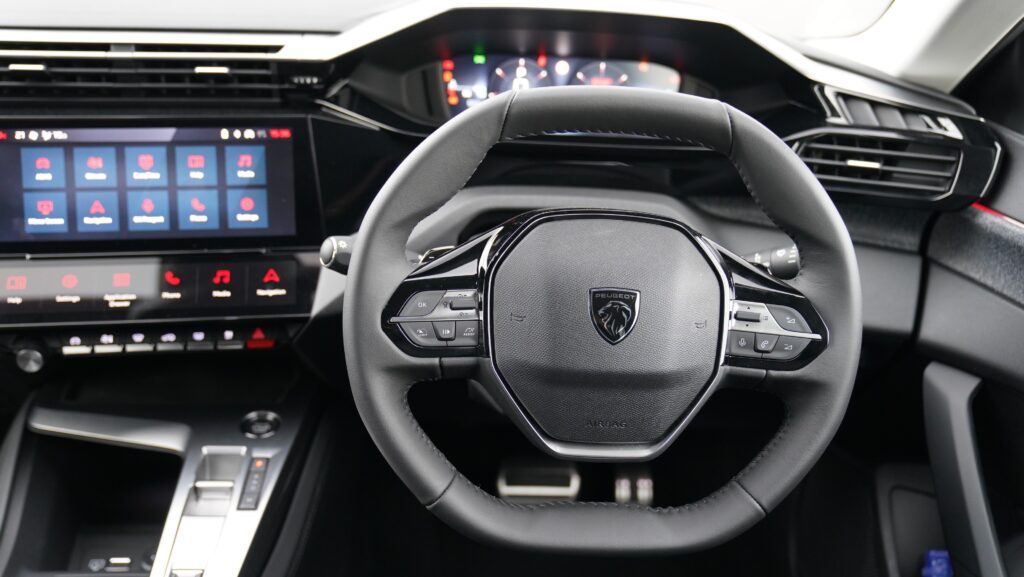
The engine range starts with the Puretech 130, a 1.2-litre three-cylinder petrol engine with 130 hp, followed by two plug-in hybrids (PHEVs): the Hybrid 180 and the Hybrid 225. The PHEV Peugeot 408s each have a 1.6-litre petrol engine, an electric motor and a 12.4kWh lithium-ion battery. The difference between the two versions is that the Hybrid 225’s engine produces more power. A fully electric version will be launched later on.
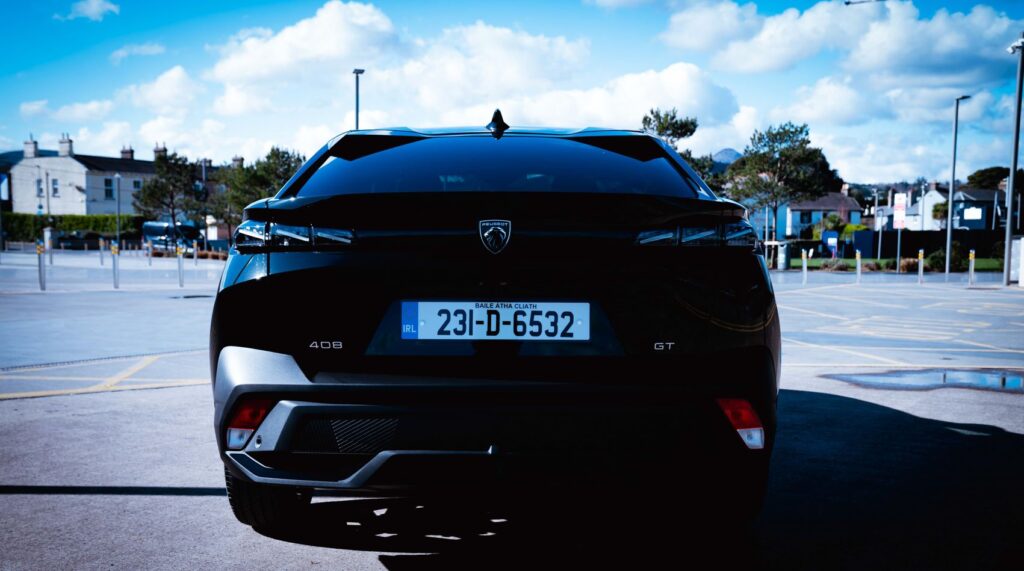
The petrol engine is smooth and refined for a economy friendly 1.2 litres and it lets you know when it’s being pushed. The suspension is firm at low speeds and the steering is loose enough to make parking an easy task. The cabin is well insulated from most wind noise and it’s generally a pleasant environment to cocoon from the outside elements. It’s enjoyable to drive and as with all Peugeots the steering is well weighted from the side streets to the highways.
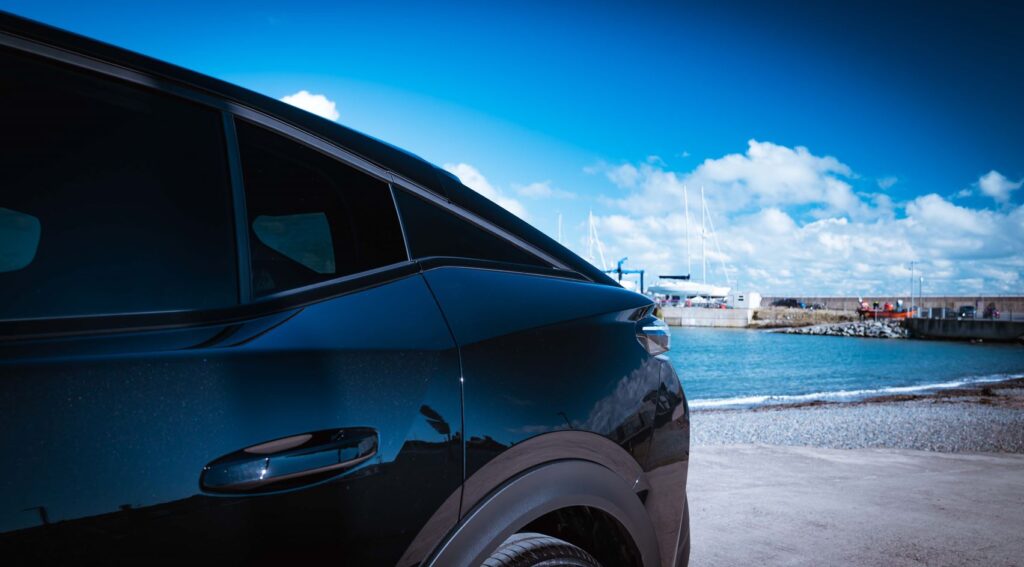
Due to its lengthy rear, boot space is good with 471-litres for the plug-in hybrids, and 536 litres in petrol versions. The 408 appeals to those who want the space of an SUV but not necessarily the looks. Top trim levels and the PHEV are pricey. Either way, you’re getting a car which is comfortable, decent to drive and has a smart, premium-feeling cabin. At 1392kg the 128bhp 1.2-litre Peugeot 408 130 Puretech is light with an engaging drive despite its more leisurely performance stats.
